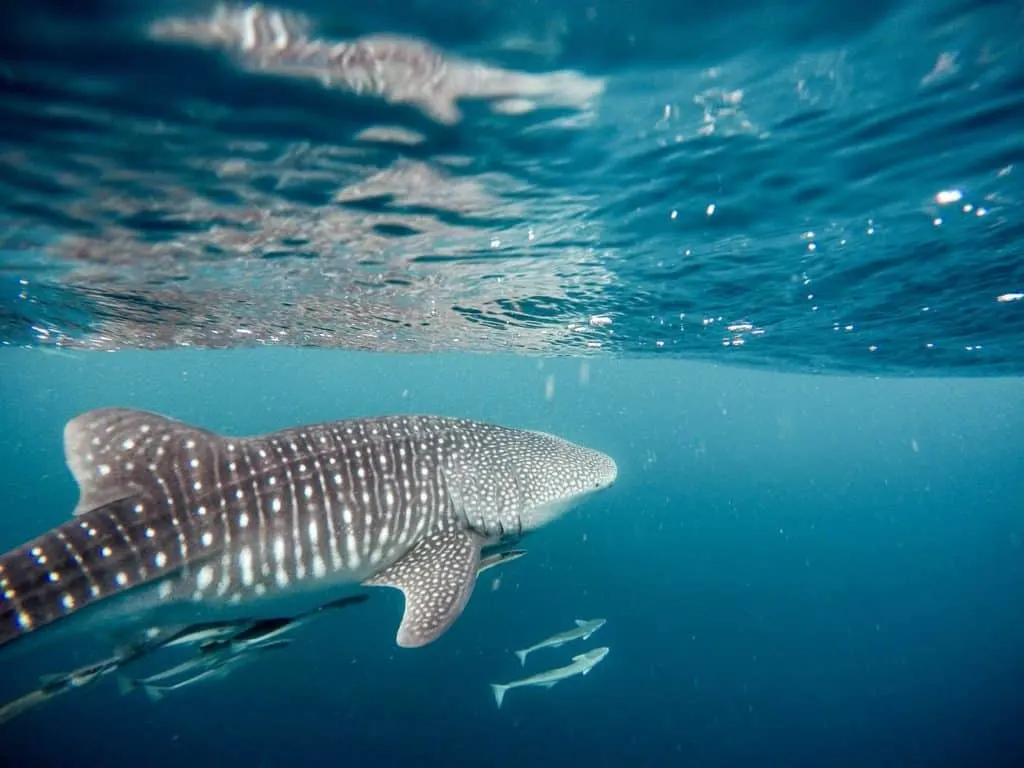The ocean is home to many fascinating creatures, but one of the most awe-inspiring is the whale shark. These gentle giants are not only the largest fish species in the world, but they are also one of the longest-living, with a lifespan of up to 70 years.
The average size of a whale shark is around 30 feet long, but the largest ever recorded was an incredible 62 feet in length. It’s hard even to imagine a creature of such immense proportions, and yet these giants of the sea are still a mystery to many of us. Let’s discover together the wonders of this creature.
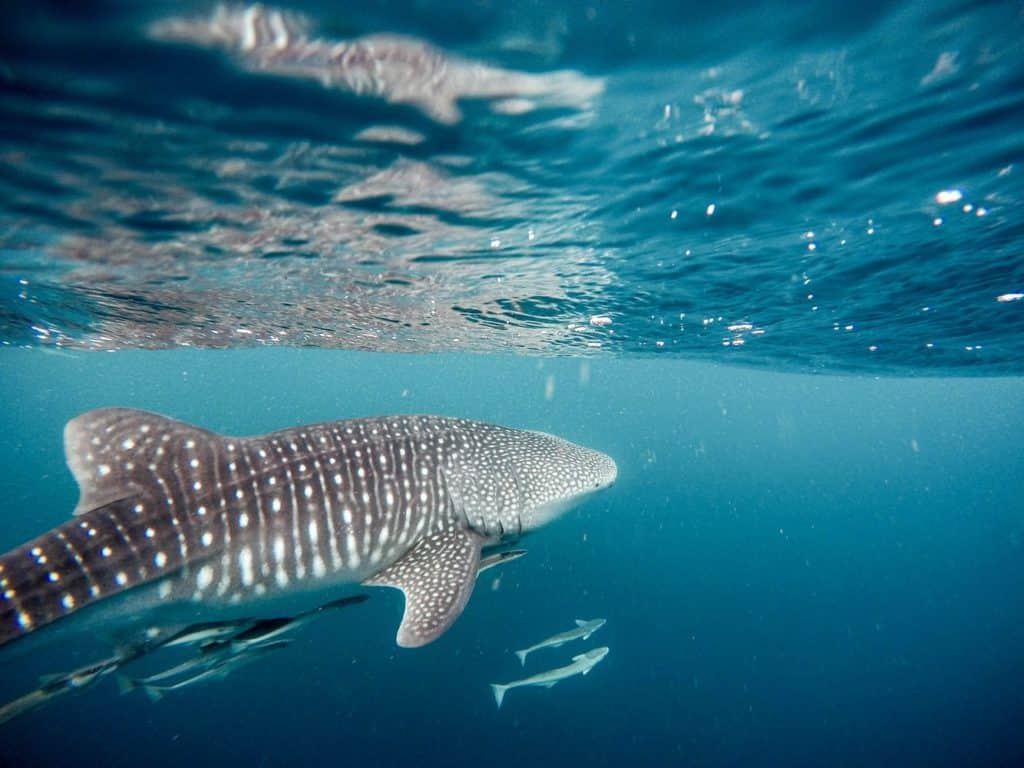
Key Points of the Largest Fish
| The whale shark, or Rhincodon typus, is a magnificent creature that has captured the imagination of marine enthusiasts worldwide. |
| These giants of the sea can live up to 70 years, which is an incredible feat for an animal of their size. Its network of blood vessels allows it to maintain a higher internal temperature than the surrounding water, which helps it stay active and alert. |
| The whale shark is truly a fascinating example of the amazing diversity found in nature. It has a distinctive appearance, with dark blue or brownish-black and white spots or stripes on its sides. |
| To address this, many tour operators have adopted strict guidelines to minimize the disturbance caused to whale sharks by human interaction. |
| Whale sharks are known to migrate long distances and have been sighted in waters as far north as Norway and as far south as New Zealand. |
Want to jump ahead? Click below
Don’t miss the video below!
Understanding the Whale Shark
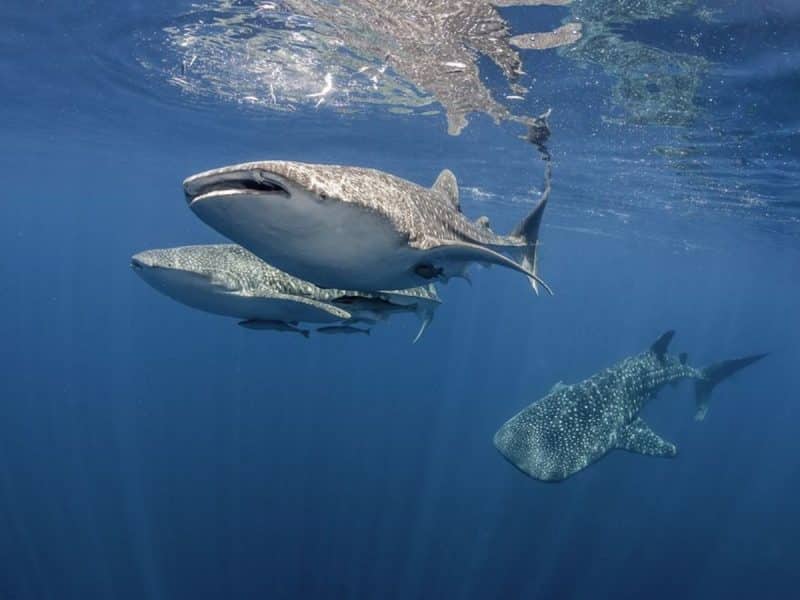
The whale shark, or Rhincodon typus, is a magnificent creature that has captured the imagination of marine enthusiasts worldwide. These gentle giants are filter feeders, relying on plankton and small marine organisms for sustenance.
Characteristics of the Whale Shark
The whale shark is a big, slow-swimming shark that eats by filtering tiny organisms from the water. It belongs to the Rhincodontidae family and is the largest kind of fish in the world. It can grow up to 30 feet long and weigh about 20 metric tons on average.
This incredible creature peacefully moves through the ocean, using its special feeding method to satisfy its huge appetite. The whale shark is truly a fascinating example of the amazing diversity found in nature. It has a distinctive appearance, with dark blue or brownish-black and white spots or stripes on its sides.
One of the most fascinating characteristics of the whale shark is its lifespan. These sea giants can live up to 70 years, an incredible feat for an animal of their size. Its network of blood vessels allows it to maintain a higher internal temperature than the surrounding water, which helps it stay active and alert.
Habitat And Distribution
Whale sharks are often seen in areas with many planktons and small marine organisms, such as near coral reefs or upwelling areas. Whale sharks are known to migrate long distances and have been sighted in waters as far north as Norway and as far south as New Zealand.
Diet And Feeding Behavior
Whale sharks rely on plankton and small marine organisms as filter feeders for their food. They have a unique method of feeding, which involves opening their wide mouth and taking in large amounts of water. The water is then filtered through their gill rakers, specially adapted to trap plankton and other small organisms. The water is expelled through their gills once the food has been filtered out.
Whale sharks have a slow feeding rate and are often seen feeding at the water’s surface. They can consume enormous amounts of plankton in a single feeding session, lasting up to eight hours. During these feeding sessions, whale sharks are often accompanied by smaller fish that feed on the food scraps left behind.
Physical Attributes Of The Largest Whale Shark
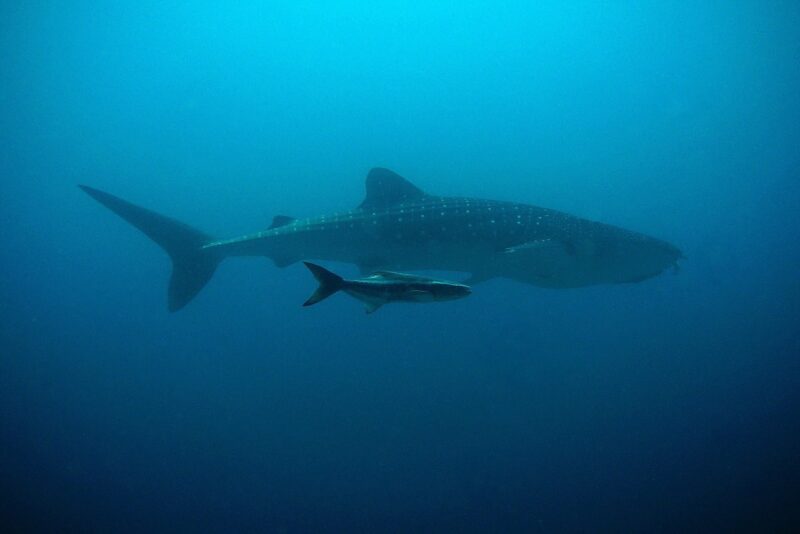
The physical attributes of the largest whale shark are truly remarkable. To put its size into perspective, the average school bus is around 30 feet long, meaning the largest whale shark ever recorded was longer than two school buses placed end-to-end.
Specifically, this colossal creature was measured at an astonishing 62 feet in length and weighed around 75,000 pounds. It’s hard to fathom a fish species that large, let alone one that still manages to move gracefully through the water. A few key factors regarding how the largest whale shark differs from other shark and fish species are at play.
Firstly, their size is a major distinction, as no other fish species is as enormous. Their distinctive pattern of white spots on a dark blue or black background is unique to whale sharks, making them easy to spot in the wild.
It’s worth noting that, despite their size and classification as sharks, whale sharks are not dangerous to humans. They are filter feeders, which means they primarily consume plankton, krill, and other small organisms. Their massive mouths enable them to consume large volumes of water to filter out their food, but their lack of sharp teeth means no danger to humans who might come across them in the ocean.
LifeSpan And Reproduction of the Largest Fish
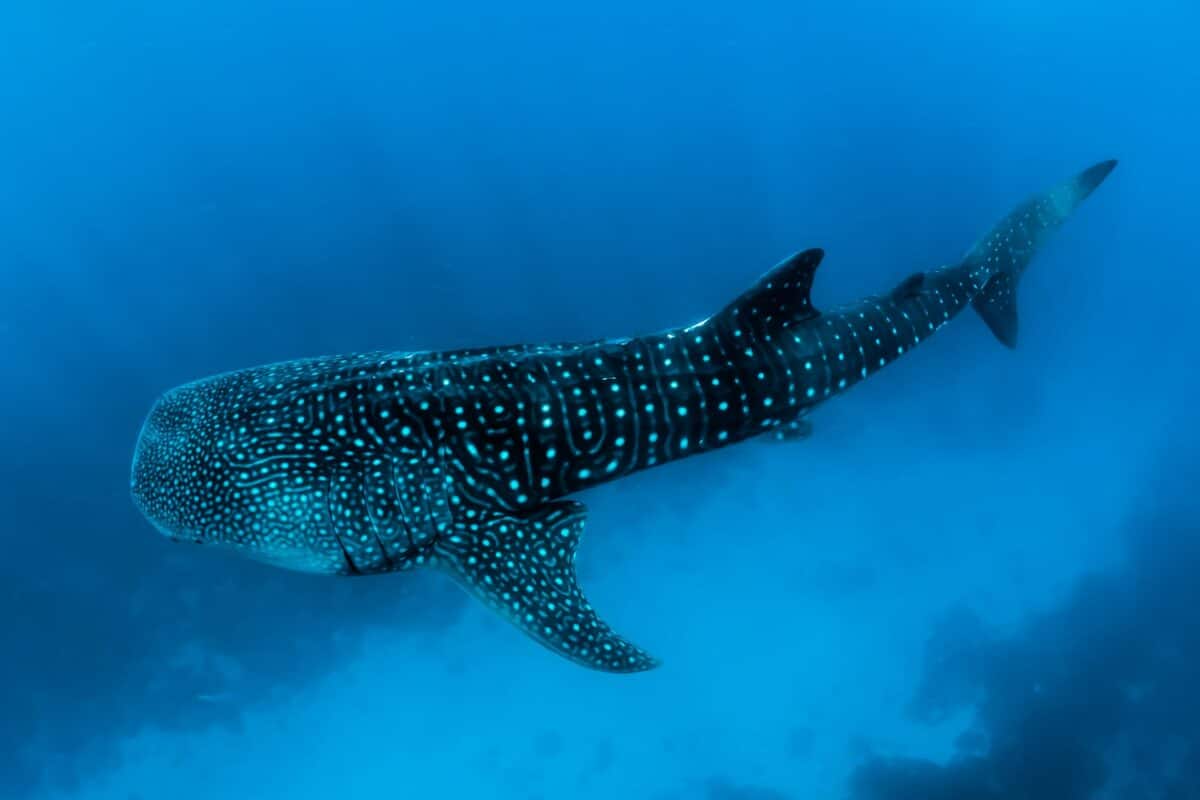
The whale shark is one of the longest-living fish species in the world, with an impressive lifespan of up to 70 years. However, the average lifespan is estimated to be around 60 years. Factors affecting these gentle giants’ longevity include environmental fluctuations, pollution, and human activities such as overfishing.
Reproduction in whale sharks is an intriguing topic. Although little is known about their reproductive habits, scientists believe that the gestation period for whale sharks could be over a year, with females giving birth to live young. Female whale sharks are known to release thousands of eggs at once, but only a few of them develop into pups. This makes them vulnerable to population depletion due to overfishing and predation.
Learn more about Whale shark reproduction.
Threats And Challenges To Survival
Despite their immense size, whale sharks face numerous threats and challenges to survival. Overfishing is one of the most significant threats, as these gentle giants are highly valued in many Asian markets for their meat, fins, and oil. They are often caught accidentally as bycatch in fishing nets, which can lead to injury or death.
Pollution is another major challenge, as whale sharks are sensitive to environmental changes and can fall ill from consuming contaminated food. This can lead to a reduced lifespan and lower rates of reproduction. Climate change is also a significant threat, as it can cause changes in ocean currents and temperature, affecting these magnificent creatures’ food distribution and availability.
In addition to these challenges, whale sharks face natural threats from predators such as killer whales and large sharks. Despite these threats, conservation efforts have been underway to protect these gentle giants, including establishing protected areas, monitoring and research, and educating the public on the importance of preserving these magnificent creatures.
Conservation Efforts for the Largest Fish
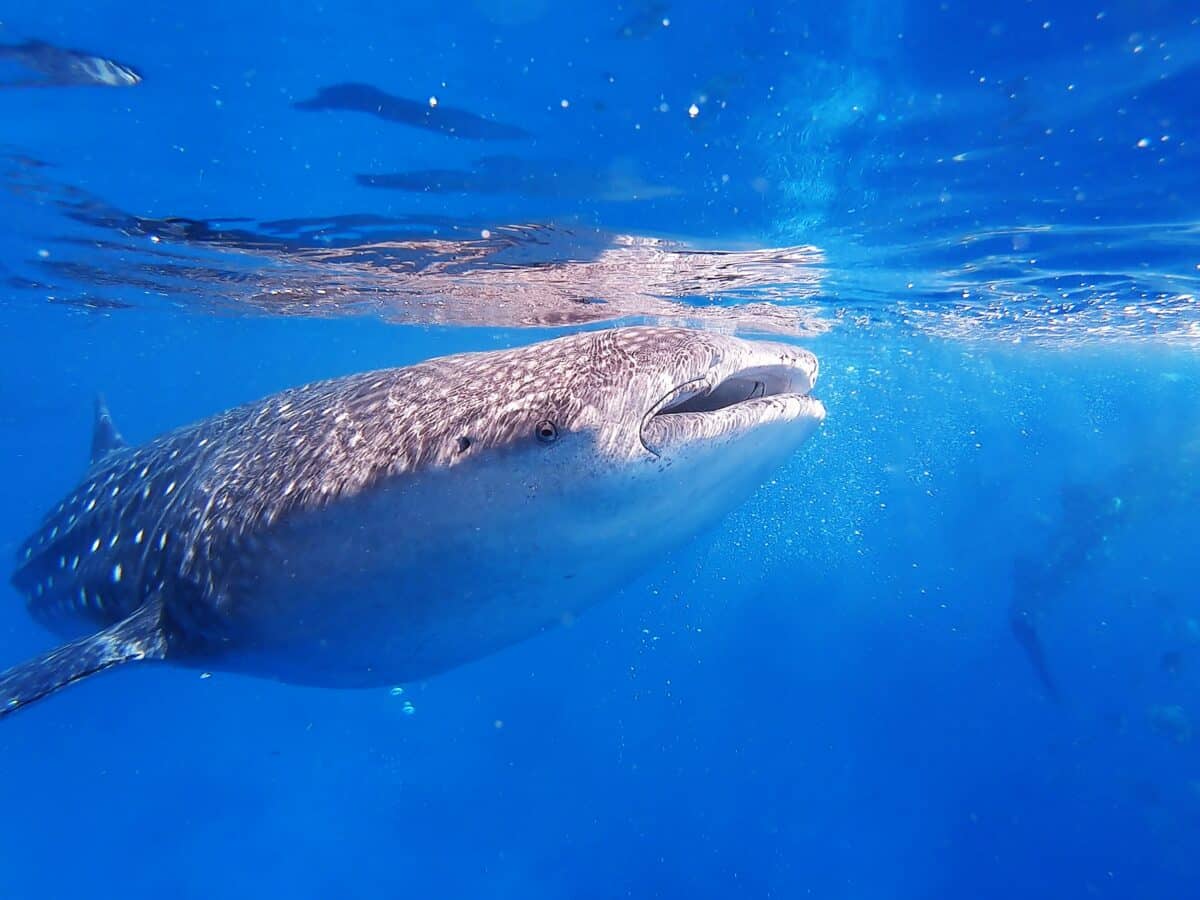
As with many marine creatures, the whale shark faces serious threats to its survival. While typically not targeted for commercial fishing, these gentle giants are often caught accidentally in fishing nets and can sustain serious injuries or die. Additionally, the warming of ocean waters due to climate change impacts the whale shark’s food sources and habitat.
Various conservation efforts have been put in place to combat these threats to the whale shark’s survival. One of the most notable is the creation of marine protected areas (MPAs). This is where the whale shark’s habitat is safeguarded from threatening human activities. For example, in 2011, the Philippines declared a 97,000 square kilometers area a protected region for whale sharks. Thus, making it illegal to fish or conduct other activities that could harm these creatures.
Another important conservation effort is the implementation of responsible tourism practices. Whale shark tourism has become popular in some parts of the world. It can negatively impact the animals if not properly regulated. To address this, many tour operators have adopted strict guidelines. This is to minimize the disturbance caused to whale sharks by human interaction. These guidelines include limiting the number of visitors daily, maintaining a safe distance from the animals, and banning flash photography.
In addition to these efforts, scientists and researchers are also working to understand better the ecology and behavior of whale sharks to inform conservation policies. This includes using satellite tagging to track whale sharks’ movements and migration patterns and study their feeding habits and reproductive behaviors.
While there is still much work to be done, these conservation efforts are making a difference for the largest fish in the world. By protecting the whale shark, we preserve a magnificent creature for future generations to enjoy and help maintain our oceans’ health and diversity.
FAQs about the Largest Fish
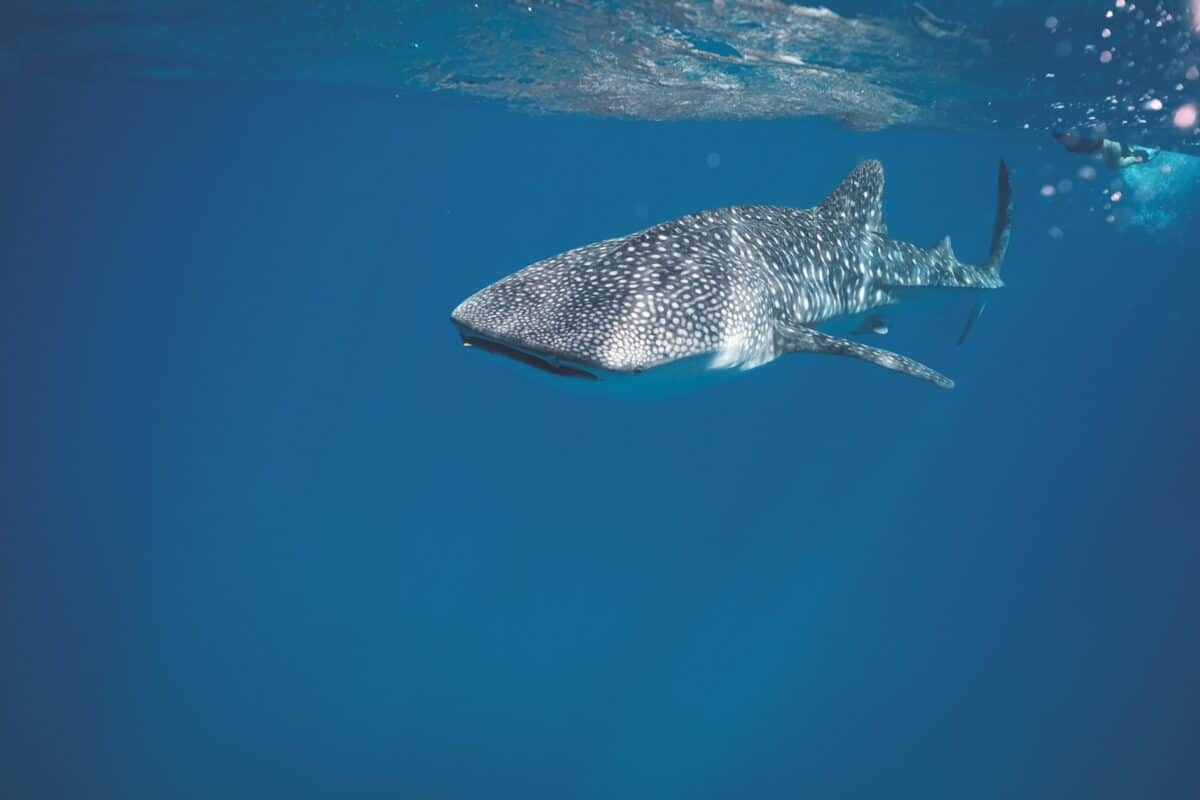
What is a whale shark?
The whale shark is the world’s largest fish, measuring up to 40 feet long and weighing more than 20 tons. It’s a filter feeder that consumes plankton and small fish.
Where can I find whale sharks?
Whale sharks are found in tropical and subtropical waters worldwide, including the waters of Mexico, Thailand, Australia, and the Maldives.
Are whale sharks endangered?
Yes, whale sharks are listed as vulnerable by the International Union for Conservation of Nature. They face some threats, including habitat destruction and bycatch in fishing nets. Additionally, the demand for their meat and fins in some countries. Conservation efforts are underway to protect these magnificent creatures.
Wrapping Up with the Largest Whale Shark
The largest fish in the world, the Whale Shark, is a magnificent and gentle creature. It has captured the hearts of many. These filter feeders can grow up to forty feet long with their distinct blue-grey color, white spots, and stripes. Furthermore, they can weigh over 20 tons. Their unique respiratory system allows them to filter out food while swimming, making them important contributors to the marine ecosystem.
Today, whale sharks face multiple threats from human activity, such as habitat destruction and overfishing. Fortunately, conservation efforts are underway to protect and preserve this endangered species. By learning about the physical and behavioral characteristics of the whale shark and where they can be found, we can appreciate the importance of conserving these magnificent creatures for future generations to enjoy.
Next up:
- Meet The Fastest Aquatic Invertebrate
- Fearsome Saw-Scaled Viper Bite
- Discover the Most Expansive Bird Migration
Join our Forum for free today!

- Beachgoers Save Massive Shark Stranded In Florida - July 22, 2024
- Pit Bull Rescued From Being Chained Its Whole Life Gets A Surprise - July 21, 2024
- Dog With Zoomies Takes Flight Into Barley Field - July 21, 2024

